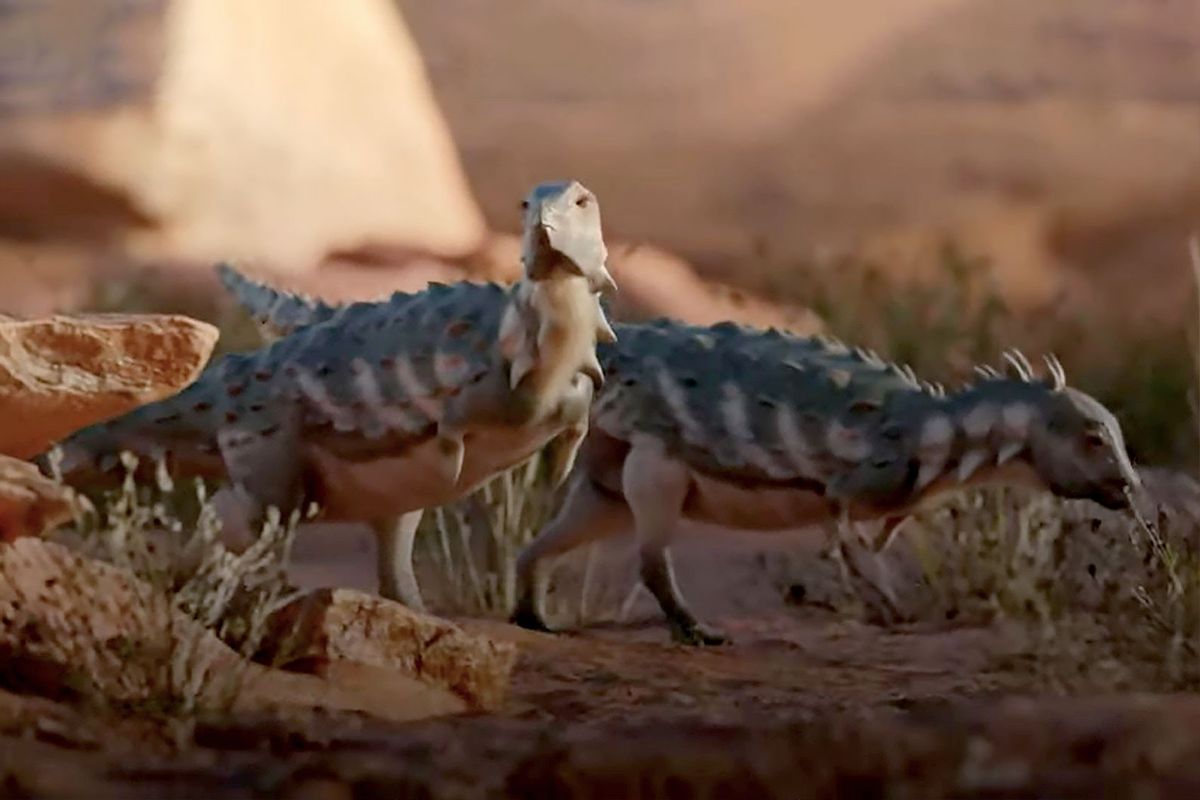Argentina has recently become a locus for weird dinosaur fossils. Last year, paleontologists in the country found dinosaur bones so big, they believe they may have belonged to the largest land animal of all time. Now they've found something much smaller, and perhaps odder still: a dinosaur that is only as big as a dog — but is covered in so much plated armor that it sort of resembles an oversized armadillo.
The newly-discovered dinosaur has been given the taxonomic name Jakapil kaniukura, as paleontologists detailed in a recent article in the journal Scientific Reports. Jakapil kaniukura lived roughly 97 to 94 million years ago; walked with two legs instead of four; had tiny arms which resembled chicken wings; possessed a short beak used to deliver sharp bites; and was equipped with a unique ring of armor around its neck.
"The neck armor of this dinosaur is unique, and it protected that delicate area from predator attacks," explained one of the study's co-authors, Sebastián Apesteguía. "The bones that are preserved from the arms show us that they were tiny," which is unusual for dinosaurs from the group to which Jakapil kaniukura belonged — known as thyreophorans. Thyreophorans are defined as the group of "armored" dinosaurs, which are characterized by thick plates of bony armor that lined their bodies. Notorious thyreophorans include stegosaurus, which had a series of mohawk-like spikes running down its back and to its tail; and anklyosaurus, which resembled a huge version of the extant horned toad, albeit with a tail shaped like a mace.
If Jakapil kaniukura sounds like the stuff of nightmares, rest easy: Even if it weren't extinct, it would almost certainly pose no threat to you. Like its thyreophora relatives the stegosaurus and the ankylosaurus, Jakapil kaniukura is believe to have been a herbivore, meaning that it ate plants instead of meat. Even if it had been a carnivore, however, Jakapil kaniukura was not very big — indeed, roughly only as long as a retriever-size dog (less than 5 feet).
Want more health and science stories in your inbox? Subscribe to Salon's weekly newsletter The Vulgar Scientist.
The discovery of Jakapil kaniukura is also scientifically significant for a number of reasons. As the paper's authors explain, the diminutive dinosaur has some "unusual anatomical features" that include many traits not usually associated with the thyreophorans from that period. It is also the first definitive thyreophoran species from the Argentinian Patagonia" — which is remarkably southward for a thyreophoran, given how they had previously only been discovered in the northern hemisphere. This is, in fact, the thyreophoran known to have been unearthed anywhere on the southern side of the equator.
In addition, while most thyreophoran walked on four legs, Jakapil kaniukura "seems to show a bipedal stance," researchers write — meaning that it only walked on two legs, much like humans. The dinosaur is also noteworthy because its discovery in the southern hemisphere hints that thyreophorans were much more widely distributed than previously believed. They also survived until the Late Cretaceous in South America, which was between 100.5 million and 66 million years ago — right before the famous mass extinction of the dinosaurs.
The dinosaur's scientific name is also noteworthy, as it utilizes indigenous languages. The word "Jakapil" is derived from a term that means "shield bearer" in the Puelchean or northern Tehuelchean Indigenous language of Argentina. Similarly the word "Kanikura" is derived from the Indigenous Mapudungun words for "crest" and "stone."
Paleontologists are also pleased to have received a surprisingly comprehensive fossil of the dinosaur, as they were able to recover some of the spikes that ran along the animal's back, an almost intact lower jaw, as well as its leg and arm bones and neck, back and tail vertebrae.
The scientists also posted a video online showing a computer-simulated reconstruction of Jakapil kaniukura as presented by Chilean palaeoartist and palaeontology student at the Río Negro National University Gabriel Díaz Yantén.



Shares